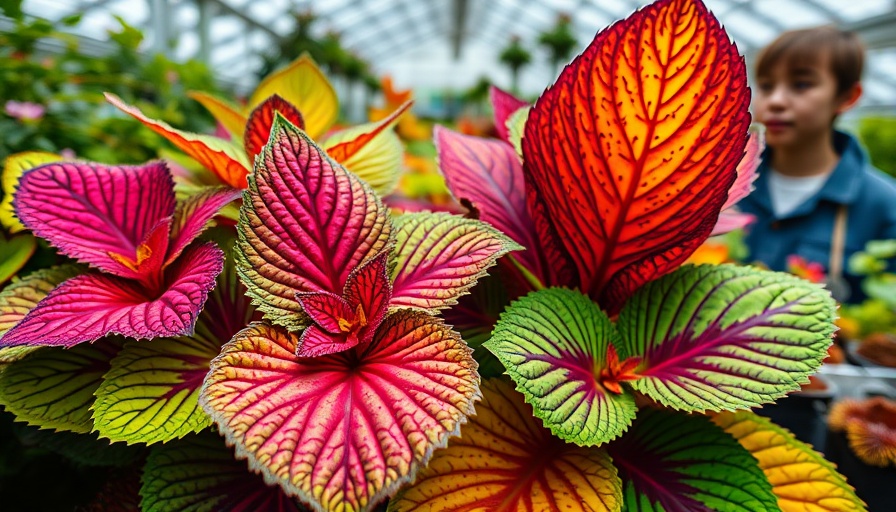
Understanding the Debate: Mulch in the Winter Garden
As winter approaches, gardens across the Okanagan start to shift from vibrant landscapes to barren patches of earth. Among the myriad choices gardeners face during this seasonal transition is the controversial topic of mulch management. Should you keep your mulch in place or remove it entirely? The decision could mean the difference between a thriving summer garden and a struggle against pests and diseases. Navigating this landscape might be daunting, but understanding the role of mulch can empower gardeners to make informed choices.
In Why I Stop Protecting My Soil Before Winter (And You Might Want To Too), the discussion dives into the complexities of mulch management, exploring the best practices for winter gardening that prompted a deeper analysis on our end.
The Benefits of Insulation: Keeping Your Plants Warm
One of the primary reasons many gardeners choose to keep mulch in place during winter is its insulation benefits. Mulch acts much like a weighted blanket for your plants, helping retain heat and prevent frost heaving—where plants push themselves out of the ground due to fluctuating temperatures. According to gardening experts, materials like shredded leaves and straw are excellent for this purpose. They not only insulate your garden but also weigh down newly planted bulbs and perennials. For those planting delicate species such as garlic, thicker mulch layers (2-3 inches) can provide essential protection as the winter chill sets in.
Balancing Act: Disease Prevention versus Plant Safety
However, keeping old mulch can introduce risks if you're dealing with certain crops. For example, if your tomato plants have faced blight, the mulch could harbor the disease and exacerbate your problems in spring. To combat this, some gardeners suggest exposing soil to cold winter temperatures, allowing nature to disrupt disease cycles. By removing mulch or even shoveling off the top layer of soil, pests and fungi can be neutralized, setting the stage for a healthier planting environment next season.
The Thawing Dilemma: Timing Your Gardening Activities
If you are eager to get into your garden come spring, the type and amount of mulch can affect how quickly your soil warms up. Thick layers of mulch can insulate the soil too well, slowing the thawing process. It's vital to remember that while mulch provides advantages, it can also create ice dams and block direct sunlight from your soil, which is crucial for warming it up. The key here is balance: keep some mulch for insulation but perhaps expose the soil where practical to encourage quicker warming.
Common Myths: Clearing Up Misconceptions
Addressing common mulch myths can further clarify its usage. For example, overly thick and matted mulch can cause anaerobic conditions, leading to unpleasant and harmful conditions for your plants. If you see signs of degradation or excess moisture, it might be time to refresh or remove some of that mulch. Additionally, gardeners should be cautious with options like bark and rubber mulch; while visually appealing, they don’t always provide the necessary insulation effect against frost.
Innovative Approaches: Alternative Mulching Materials
As gardeners discover new methods to tackle winter, poly mulch is gaining traction. Simple poly sheeting, often used in painting, can be laid over soil to provide a barrier against pests and help warm the ground when spring arrives. This method can lead to earlier weed growth, but the advantage is that it can prepare soil conditions for planting. By allowing weeds to germinate under less-than-ideal circumstances, gardeners can eliminate them when conditions are more favorable.
Local Insights and Community Perspectives
The Okanagan gardening community is rich with personal accounts and shared wisdom, creating an opportunity for collaborative learning. Those who have dealt with voles and other creatures understand that predator prevention is crucial, making mulch management a priority. Some recommend thinning out mulch layers or opting for lighter materials to discourage these visitors, focusing on solutions that mitigate both plant health and wildlife interactions.
Exploring the Future: What Lies Ahead for Seasonal Gardening
Looking forward, the techniques and strategies gardeners adopt evolving year after year. With climate fluctuations becoming more frequent, understanding how to manage soil and mulch will be ever more critical. The back-and-forth on mulch and its purpose is unlikely to end soon, but ongoing experimentation will lead to innovative practices that cater specifically to local conditions in the Okanagan area.
In conclusion, the video Why I Stop Protecting My Soil Before Winter (And You Might Want To Too) tackles a significant aspect of winter gardening decisions, emphasizing the importance of mulch management. This exploration raises essential questions that every gardener should consider and adapt to their specific circumstances. The key is not necessarily focusing on rigid practices but leveraging the insights shared by the community and experimenting to find what works best for you.
If you're ready to tackle winter gardening in a new light, think about how these insights apply in your garden. As we approach the new gardening season, remember that knowledge is your greatest ally.
 Add Row
Add Row  Add
Add 




Write A Comment